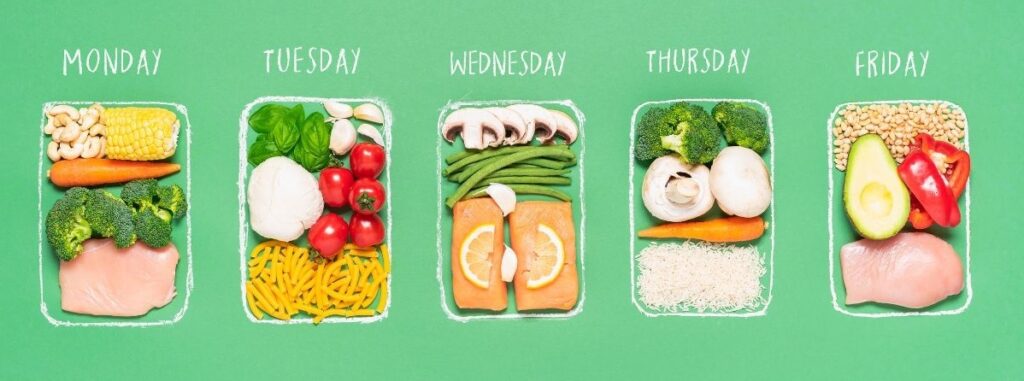Do you continuously attempt to improve your diet but find that life gets in the way? Meal planning could be the solution.
It’s a plan that can do much more than assist you in losing weight. It doesn’t have to be time-consuming or difficult. More deliberate purchasing and eating make life easier for busy professionals and parents.
Learn more about the benefits of meal planning. Examine the advantages and how to get started.
Meal Planning Has Many Advantages:
1. Eat More Healthily.
When you plan your meals ahead, you’re more likely to make wise decisions.
Create meals and snacks that emphasize whole foods and balanced nutrition. You can end yourself losing weight as well.
2. Minimize Food Waste.
According to the US Department of Agriculture, 30 to 40% of our national food supply ends up in landfills.
You’ll save money on groceries while also helping the earth.
3. Reduce Expenses.
Meal planning can also help you save money in other ways.
Compare prices to determine which stores have the greatest deals on certain things. Make the most of weekly sales.
4. Conserve Time.
While you may have to spend some more time planning at the start, you will most likely make up for it.
Imagine no more last-minute excursions to the grocery store and having the ingredients for any meal on hand.
5. Reduce Tension.
When your children ask what’s for supper, does your stomach sink?
Maybe if you can cross one task off your to-do list for the remainder of the week, you’ll be able to breathe better.
6. Handle Chronic Illnesses.
Following a prescribed eating plan may assist in alleviating discomfort and agony.
If you have diabetes, for example, eating identical meals at the same time each day will help stabilize your blood sugar.
Meal Preparation Success:
1. Examine Your Calendar.
Make a plan that works for you. On weekends, you might wish to try out new and challenging recipes.
Perhaps you require pizza evenings on days when you work overtime.
2. Make an Inventory.
Determine what you already have on hand to create recipes to utilize old beans and spices.
Check your freezer as well.
3. Create a List.
You’re ready to go to the store to fill in the blanks.
Shopping using a list can help you remember what you need and will keep you from making impulse purchases.
To save time, shop during off-hours such as early mornings and late evenings rather than weekends and after work.
Why Do People Like Meal Planning Video:
Pasta, grains, beans, olive oil, and baking ingredients are basic essentials.
Learn how to store foods to extend their shelf life and purchase airtight containers.
5. Set Up Your Kitchen.
Cooking is easier when you have the right tools.
Purchase an air fryer or slow cooker and a high-quality knife set.
6. Savour Any Leftovers.
Prepare meals in batches that will last longer than one day.
Roast a chicken for dinner and use the leftovers to make sandwiches for lunch.
Make a large pot of chili and freeze half of it for later.
7. Embrace Technology.
Investigate websites and apps that can expedite the procedure.
Look for meal planning templates on the internet.
Subscribe to services that will offer you recipes according to your tastes.
8. Be Adaptable.
Meal planning is more effective when it is tailored to your specific needs.
Be honest with yourself about your available time and cooking abilities. You can begin modestly and gradually progress.
Meal Planning Will Give You More Spare Time!
When you start meal planning, you may wonder how you got along without it.
A more systematic food purchasing and preparation approach can help you eat healthier while saving time and money.







